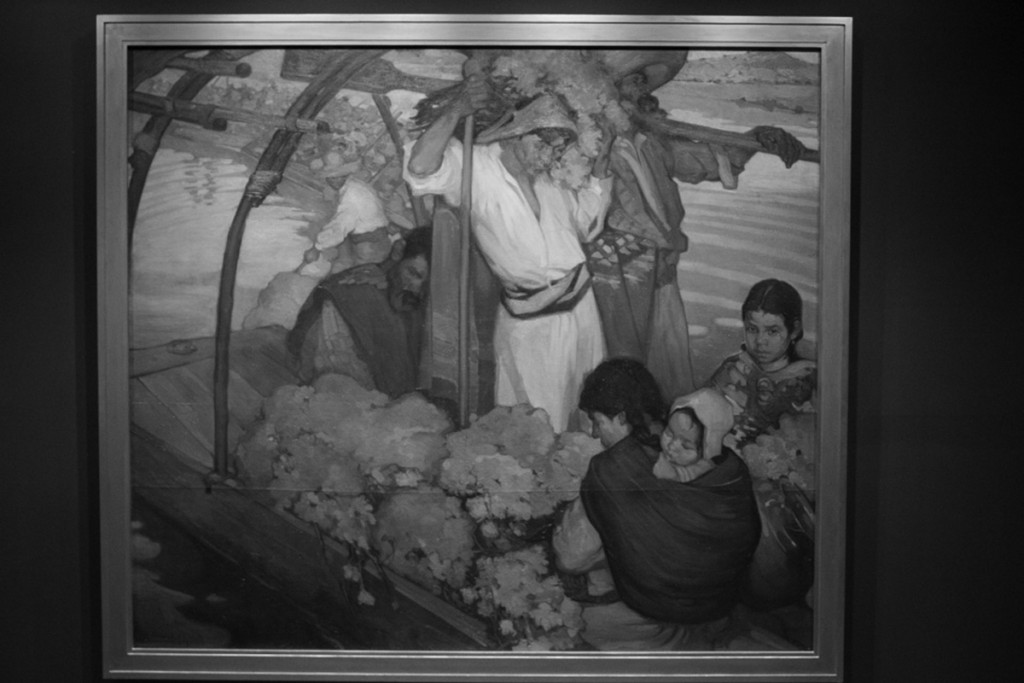Stepping through the doorway of the Philadelphia Museum of Art’s newest exhibit “Paint the Revolution: Mexican Modernism” is a unique experience that allows you to, quite actually, step back in time to experience a world of rich history and culture that is oftentimes otherwise and unfortunately characterized by gaudy, Americanized versions of the taco. The exhibit, open now through Jan. 8, 2017 until it travels to the Museo del Palacio de Bellas Artes of Mexico City later in 2017, features a wide range of accomplished artists, including well-known names such as Diego Rivera, Frida Kahlo, José Clemente Orozco and David Alfaro Siqueiros. Starting with pieces from the early 1910s and ending with works from the 1950s, “Paint the Revolution” depicts a very robust and emotive take on the history of the Mexican Revolution from a perspective that may be difficult to find within the pages of any history textbook. The artists’ variety of media–from watercolors to wood prints to pastels on cardboard–work to create images that provide a firsthand account of both the internal and external struggles the people of Mexico were dealing with as a result of the Revolution that so heavily marks their past.
The first piece that graces the eye upon walking into the gallery is an oil on canvas painting, “The Offering” by Saturnino Herrán in 1913. Nearly six feet tall and seven feet long, the painting depicts a caravan of indigenous men and women transporting flowers by boat, an important commodity for many of their cultural practices like Día de los Muertos. The muted pastel shades of the turquoise water and the orange of the marigolds contrasted with the tired, weathered faces of the workers presents a melancholy scene of Mexican culture as beautifully peaceful, although painstaking at times.
As you are carried through the gallery and the decades increase, the peacefulness originally portrayed in the opening painting is slowly lost. The name of the exhibit, after all, is “Paint the Revolution.” The shades of pastel that Herrán utilized originally become less and less frequent among artists and are replaced by deep, harsh colors that help to embody the stark turmoil of the war. The cultural representation of Mexican customs slowly fades to illustrate the oppression of modernity as a result of the onset of the Revolution.
The exhibit continues by displaying pieces that show a constant fluctuation between times of hardship and unrest for the Mexican people and times of peace and celebration of culture, times which most often had their greatest effects on Mexico politically, socially and economically. This fluctuation is visually represented by color schemes that reflect varying tones of the period, artistic styles and techniques that indicate a modernized worldview, and shifting to subjects that demonstrate the effects of war and modernity.
At its core, “Paint the Revolution: Mexican Modernism” is a journey that allows all who walk through it to see history as it was happening. The art featured in this exhibit is what has survived from a devastating time in Mexico’s history, and it will continue to speak long after its creators have passed on and can no longer tell the story themselves. The art provides a very up-close and intimate perspective on this time period in a way that no page of a history textbook could even begin to describe. By walking through this exhibit, we are seeing life in early Mexico through the eyes of those who experienced it firsthand. It shows a people who have lived and lost, who have endured and who deserve to be remembered. It shows a culture which has thrived and suffered, which has remained: a culture which deserves to be celebrated.

